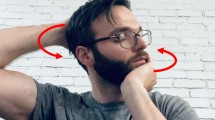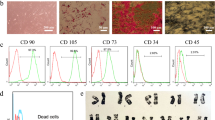Abstract
Study design:
Case report.
Objectives:
To present an unusual type of penetrating objects causing Brown–Séquard syndrome (BSS) and its clinical character.
Setting:
Department of Orthopaedic Surgery, Shanghai Changzheng Hospital, Second Military Medical University, Shanghai, PR China.
Methods:
A 54-year-old man fell from a height of 4 m onto an iron fence, and a sharp iron fence point penetrated the right side of his back. He developed left-sided BSS. Both X-ray film and computed tomography scanning of the thoracic spine showed a right vertebral plate of Th5 fracture and metal fragments inclining through the posterior and left lateral of the spinal canal. Emergency decompressive laminectomy and removal of the foreign metal piece were performed. No improvement in neurological function was observed 10 days after surgery, and thus hyperbaric oxygen treatment was initiated twice a day for the next 1 month.
Results:
Forty days after surgery, his bladder function returned to normal. The motor deficit had regressed and he could walk without assistance 70 days after the operation. One year later, his lower extremity functions recovered almost completely, except for slight numbness on the right side.
Conclusion:
As far as we know, on the basis of existing literature, the injury mechanism to BSS by a sharp iron fence point has not been reported so far. The satisfactory recovery after injury may in part be attributed to timely surgery and continuing hyperbaric oxygen treatment.
Similar content being viewed by others
Log in or create a free account to read this content
Gain free access to this article, as well as selected content from this journal and more on nature.com
or
References
Russell JH, Joseph SJ, Snell BJ, Jithoo R . Brown–Séquard syndrome associated with Horner's syndrome following a penetrating drill bit injury to the cervical spine. J Clin Neurosci 2009; 16: 975–977.
Moin H, Khalili HA . Brown–Séquard syndrome due to cervical pen assault. J Clin Forensic Med 2006; 13: 144–145.
Waters RL, Sie I, Adkins RH, Yakura JS . Motor recovery following spinal cord injury caused by stab wounds: a multicenter study. Paraplegia 1995; 33: 98–101.
Asamoto S, Sugiyama H, Doi H, Iida M, Nagao T, Matsumoto K . Hyperbaric oxygen (HBO) therapy for acute traumatic cervical spinal cord injury. Spinal Cord 2000; 38: 538–540.
Pollard ME, Apple DF . Factors associated with improved neurologic outcomes in patients with incomplete tetraplegia. Spine 2003; 28: 33–39.
Author information
Authors and Affiliations
Corresponding author
Ethics declarations
Competing interests
The authors declare no conflict of interest.
Rights and permissions
About this article
Cite this article
Ye, T., Jia, L., Chen, A. et al. Brown–Séquard syndrome due to penetrating injury by an iron fence point. Spinal Cord 48, 582–584 (2010). https://doi.org/10.1038/sc.2009.174
Received:
Revised:
Accepted:
Published:
Issue date:
DOI: https://doi.org/10.1038/sc.2009.174
Keywords
This article is cited by
-
Management of non-missile penetrating spinal injury
Neurosurgical Review (2019)
-
Brown-Séquard syndrome in a 11-year-old girl due to penetrating glass injury to the thoracic spine
European Journal of Orthopaedic Surgery & Traumatology (2013)



